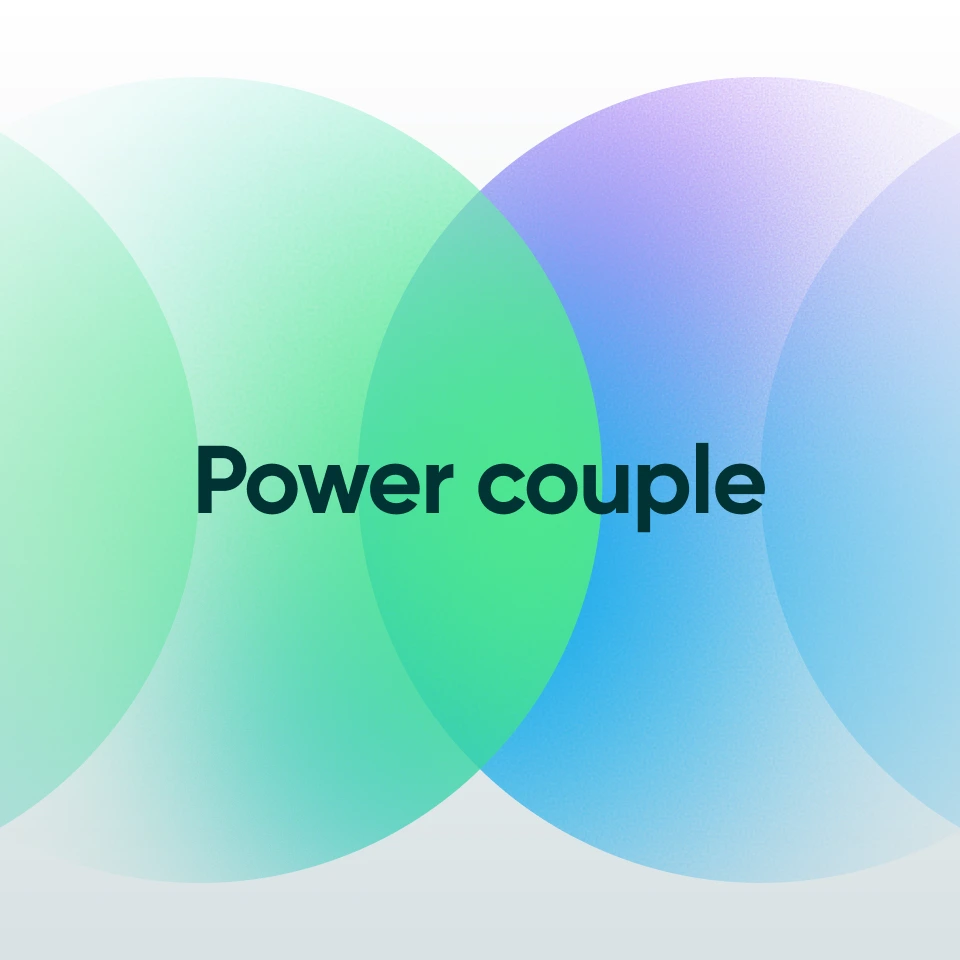AI has become one of the most talked-about tools in the world today. But behind all the buzz, what does it actually do—and how does it impact your care? As the Vice President of Neuroradiology, I see firsthand how AI is changing the way we practice radiology, and it’s not by replacing human expertise, but by elevating it.
When you come in for a whole body MRI, AI is working quietly in the background from the very first image captured. It sharpens image quality, speeds up scan time, and highlights structures that might need a closer look. Later, during the reviews of your scan, AI helps a radiologist measure, compare, and interpret findings with even greater precision. In other words: it helps them see more, faster, and with deeper context—so early signs of disease or potential abnormalities may be identified before symptoms ever appear.
Read on for more of a behind the scenes look at how radiologists and AI are working together.
A patient heads into the scanner
Prenuvo’s advanced 1.5T MRI machines are customized to take detailed images of your whole body in just under an hour. During your scan, we’re collecting around 1.3 billion voxels of imaging data across 33 different structures, organs, and systems.
AI plays a critical role at this stage. Deep learning software is integrated into the acquisition process to enhance image quality in real time, while reducing the overall scan duration. These AI tools enhance signal quality and help reduce patient time in the scanner by up to 30 minutes.
Related: What is the difference between a 1.5T and 3T MRI?
Then, the data gets sent to the radiologist to review
Once a Prenuvo scan is completed, the imaging data, combined with the patient’s intake form and any prior Prenuvo exams, are securely transmitted to our exclusively-affiliated radiology group partners.
Each exam is reviewed by a board-certified radiologist, who evaluates the entire scan in detail, slice by slice. If a high-risk finding is identified, it’s sent to another radiologist for a second independent review to ensure an accurate diagnosis.
Patients receive a full scan report approximately 7-10 days after their scan, which is delivered through the Prenuvo app. They’re then offered a clinical consultation with a nurse practitioner to review their results, address questions, and discuss recommended next steps.
How AI supports (not replaces) human expertise
AI acts as a valuable assistant for radiologists, adding an extra level of support to our already extensive scan review process. AI deep-learning models can help identify and measure key anatomy—brain structures, liver fat, visceral and subcutaneous fat, skeletal muscle, and other intelligent measurement tools to help enhance accuracy and reproducibility of radiologist’s measurements.
Related: Why you should be tracking your body composition
For example, AI algorithms can help label every vertebral body in the spine, which can significantly speed up the review process.
Right now, AI focuses on tasks like segmenting images and making measurements. It’s a powerful teammate for radiologists who remain the ultimate experts responsible for verifying findings, providing clinical context, assessing risk, and delivering a final patient diagnosis.
An example of how AI and radiologists can work together to help detect an aneurysm in a Prenuvo scan
If Prenuvo’s investigational AI algorithm detects a small bulge on an artery in the brain, it automatically highlights the area and measures it. A radiologist then reviews the images, confirms the finding and dimensions, and uses a clinical tool—such as the PHASES score (which estimates the risk of aneurysm rupture based on factors like patient age and aneurysm size and location)—to assess the risk of rupture and determine appropriate next steps for care.
In this case, AI helped spot the abnormality, but risk assessment and medical decision-making were led by physicians.
How AI has made whole body scanning more efficient
Thanks to our AI enhancements, Prenuvo’s MRI scanners are faster—shortening scan time by up to 70% compared to MRI scanners which do not leverage AI. Additionally, automated AI segmentation can help eliminate some manual measurements that would take a long time to do by hand. It even allows for some deeper measurements that we wouldn't be able to otherwise calculate, such as volumetric measurements of visceral fat tissue or of the whole brain and its structures. AI can help increase the accuracy and reproducibility of scan data and enables patients to get their results back fast.
Why this matters—especially for people without symptoms
Combining AI-enhanced imaging with expert radiologist interpretation can offer benefits for asymptomatic individuals by helping detect potential abnormalities.
A key example comes from our internal Polaris study of 1,011 individuals undergoing whole body MRI: cancers were found in 2.2% of participants—and 68% of these cancers were in organs without established screening protocols. These findings underscore the value of advanced imaging and expert radiology review in detecting diseases that might otherwise go unnoticed.
Beyond cancer, whole body MRI can broaden the scope of what’s possible outside conventional screening. Conditions such as brain aneurysms, fatty liver disease, and other asymptomatic diseases can be identified early, creating opportunities for more personalized risk assessment and proactive health planning.
Related: Detecting aneurysms with a Prenuvo scan
For individuals interested in proactive health management, the model can also help monitor quantitative imaging biomarkers like body composition and brain volumetrics. These measures can help guide metabolic, cognitive, and lifestyle decisions over time.
With the help of AI, Prenuvo helped detect signs of neurodegeneration in a patient with zero symptoms
In one particular case, a patient in their early 60s with no cognitive complaints underwent a whole body MRI that included advanced AI-powered brain volumetrics. Our AI tools helped identify hippocampal atrophy, that may have been too subtle to be detected by visual review alone but statistically significant compared to age and sex-matched norms. This abnormality prompted the patient to reach out to their primary health provider to receive follow-up cognitive testing and biomarker evaluation, ultimately confirming early-stage Alzheimer’s. Because a potential abnormality was identified early, and the patient received follow-up recommendations from their primary health provider, the patient was able to begin disease-modifying therapy that was effective.
This unique case reflects what peer-reviewed studies have suggested: quantitative brain volumetrics can help improve diagnostic sensitivity. A study in European Radiology showed that supplementing radiologist review with volumetric analysis increased sensitivity in distinguishing Alzheimer’s from frontotemporal dementia from 72% to 82%. By combining objective AI data with expert human interpretation, we can help detect potential abnormalities, encourage personalized care, and advance preventative health.
Related: Prenuvo AI-assisted study uncovers correlation between lifestyle and brain volume changes
How Prenuvo differs from traditional imaging
Together with our exclusively-affiliated radiology group partners, quality control and management of every step of a Prenuvo scan experience at all our clinics locations for consistency and reliability.
Prenuvo utilizes customized 1.5T MRI scanners configured with dedicated whole body screening protocols. These protocols are specifically optimized for preventative imaging and incorporate deep learning enhancements to reduce scan time without compromising image quality.
Prenuvo ensures uniformity by standardizing hardware, software, imaging acquisition, AI post-processing tools, and radiology interpretation across its medical group. This structure enables consistent imaging quality and structured diagnostic reporting at scale.
Each exam is interpreted by a board-certified radiologist exclusively-affiliated with Prenuvo. Reports follow a structured format with annotated images and standardized language to help improve clarity, reduce variability, and support continuity of care. Results are typically returned to patients within 7-10 days.
Prenuvo also maintains an active, internal research program focused on the clinical utility of whole body MRI. Since 2022, over 40 peer-reviewed publications and scientific presentations have been produced, contributing to the growing evidence base supporting whole body MRI could be beneficial for asymptomatic individuals. This integration of clinical care and research helps ensure that diagnostic practices are both high-quality and evidence-driven.
Where the AI - radiologist partnership may be headed
The radiologist - AI partnership is rapidly evolving from single-point diagnostic support to more dynamic health assessments. Imaging AI is shifting focus—from helping identify abnormalities on individual scans to analyzing trends across time and predicting future disease trajectories. With over 340 FDA-cleared radiology algorithms currently available and adoption in more than two-thirds of U.S. radiology departments, the foundation for widespread integration is already in place.
In the next five years, we predict this partnership is expected to advance significantly through multimodal integration. Future AI systems have the ability to combine imaging data with clinical labs, genomics, and lifestyle inputs to help generate personalized risk forecasts. Algorithms may have the capacity to automatically compare each new scan to a patient’s prior imaging, quantify subtle interval changes, and flag clinically relevant trends. This longitudinal analysis can help promote earlier, more precise intervention.
Advances in natural language generation may also streamline radiology workflows by drafting structured reports that radiologists can review and refine. This shift could reduce time spent on measurement and documentation, allowing radiologists to focus more on interpretation, patient communication, and preventive care planning.
The result could be a more efficient, data-rich, and patient-centered model of diagnostic imaging that helps support long-term health management, not just disease detection.
Coming soon: How old is your brain?
You can take tests that help determine your biological age, but what if you could learn how at 40, your brain compares to other 40 year olds? Is it aging well or does it have some signs of wear and tear that you could slow down through diet, exercise, or other lifestyle interventions?
We’re currently working on new ways to measure how your organs are aging—not just by calendar years, but biologically. Using one of the largest internal databases of whole body MRIs (over 150,000 scans), we’ve created models that can help estimate the "brain age" of a person by looking at measurements such as brain volume.
Using this internal dataset, Prenuvo has developed a “brain age” model that can help estimate an individual’s brain age within ±3 years of their chronological age, based on whole-brain and regional volume data. Parallel efforts are internally underway to generate similar biological-age metrics for other organ systems, with aspirations to generate a multi-organ, longitudinal “health age” dashboard. This could help patients track how their brain, liver, heart, and other systems are aging relative to population norms, and help patients monitor changes over time.
To learn more about the benefits of whole body scan, book a call with a member of our team.




